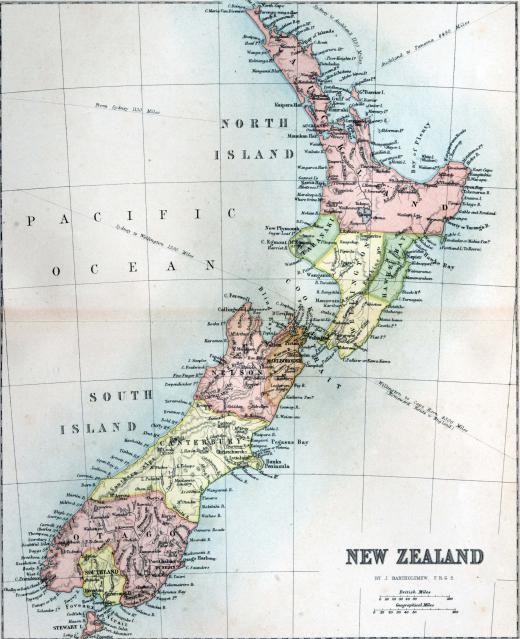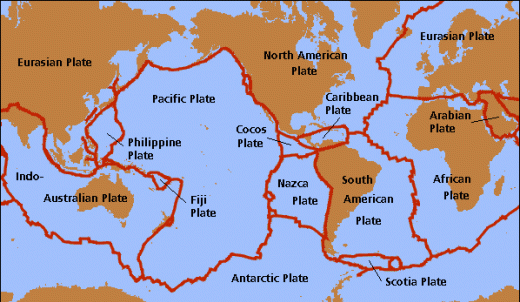What is Zealandia?
 Michael Anissimov
Michael Anissimov
Zealandia is a mostly submerged microcontinent about 3,500,000 km2 (1,350,000 mi2) in extent, larger than India or Greenland and just under half the size of Australia. The 7% of the continent that is above water makes up the two islands of New Zealand. The remaining 93% is submerged under 100 - 1000 m (328 - 3,280 ft) of shallow water. Zealandia is also known as Tasmantis, the New Zealand continent, and the Zealandia continent. The entire continent juts approximately 1,000-1,500 m (3,280 - 4,900 ft) from the surrounding sea floor.
Zealandia is one of two major submerged microcontinents in the world, the other being the entirely submerged Kerguelen continent, located about 5,000 mi (8,040 km) to the east. These microcontinents were created through friction between tectonic plates and resulting volcanic activity. The continent of Zealandia is primarily composed of two parallel mountain ranges, mostly underwater. This geological makeup is unique among continents.

Zealandia lies on the boundary between two tectonic plates, the Australian plate and the Pacific plate. In broad terms, the Australian plate is moving north while the Pacific plate is moving west. Interestingly, the south and north islands of New Zealand are located on different plates, and as a result the two islands are drifting apart from each other at a rate of about 4 m (13 ft) per century. Zealandia separated from its parent continent, the supercontinent Gondwana, about 130 and 85 million years ago. Like South Africa and the tip of South America (Patagonia), New Zealand contains some species left over from when the three were united as a supercontinent.

During past Ice Ages, the world's sea levels have sunk, thereby exposing more of Zealandia, though exactly how much is unknown. Much of Zealandia is thought to contain fossils from times when life thrived on more of the continent. Zealandia is home to new Zealand's largest natural gas field, the Maui gas field, which provides 75% of New Zealand's hydrocarbons. More areas of Zealandia will be mined in the future.
AS FEATURED ON:
AS FEATURED ON:












Discuss this Article
Post your comments